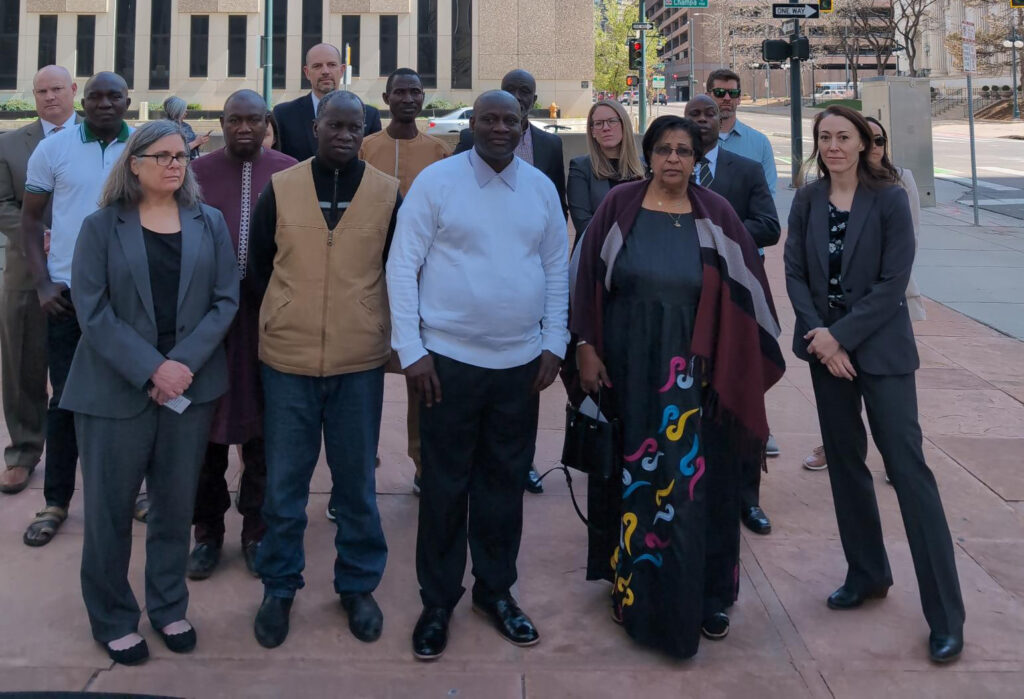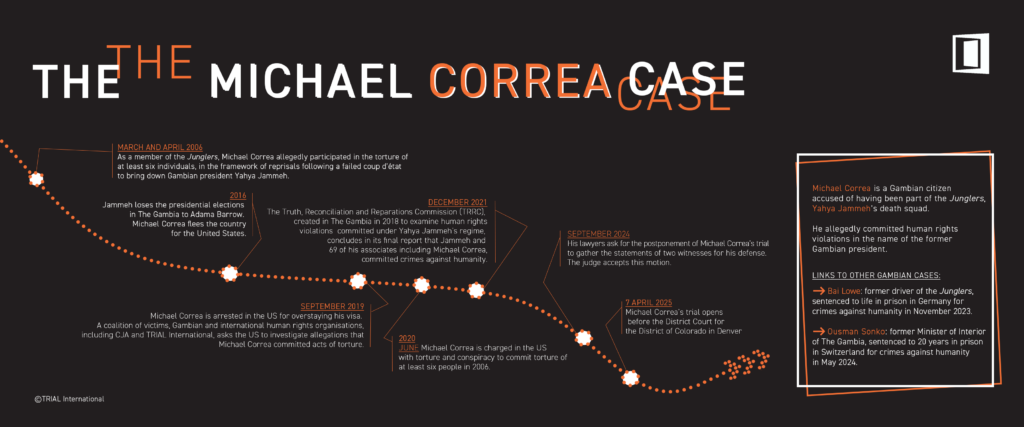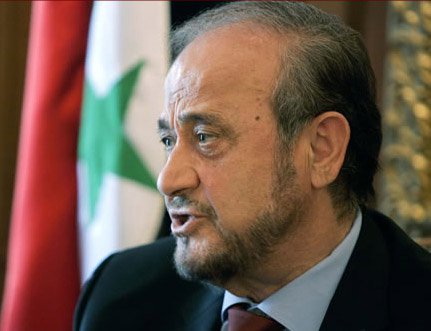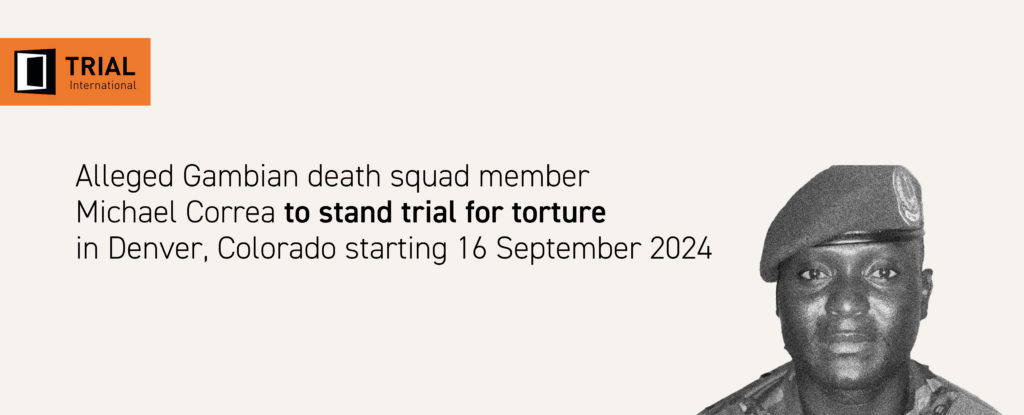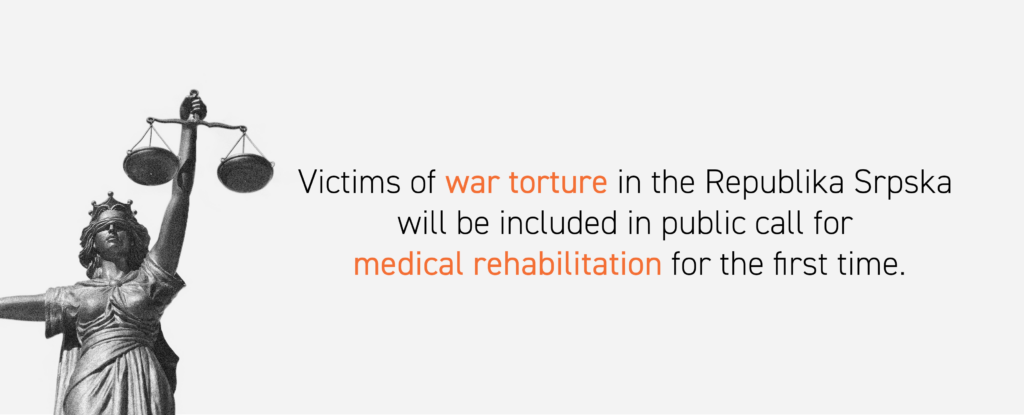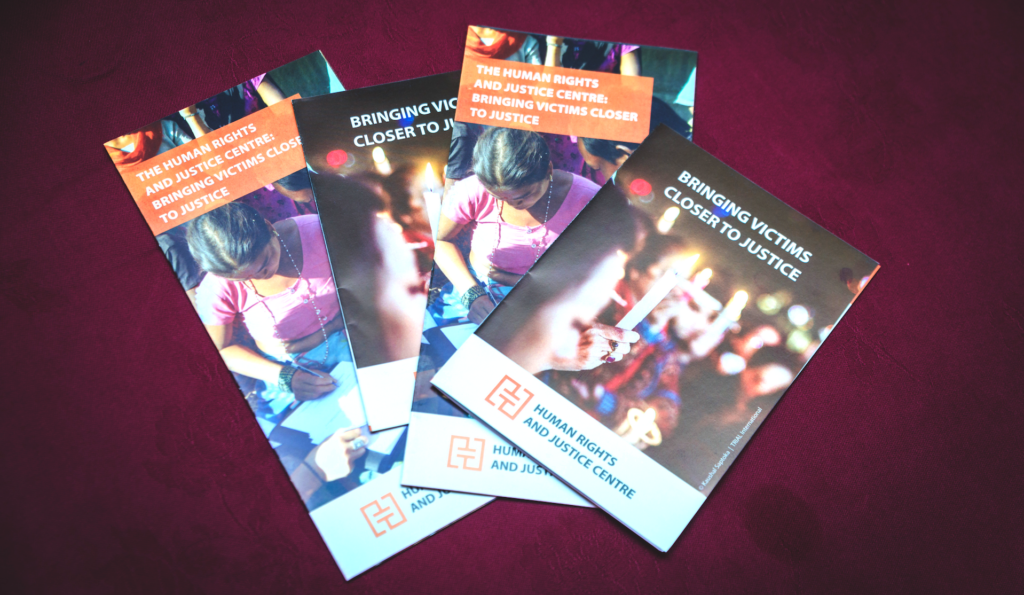Enforced disappearances of 12 persons in 1992 in Vogosca
In May 2010, TRIAL submitted a communication to the Human Rights Committeeconcerning 12 cases of enforced disappearance wich occured in June 1992 in Svrake village in Vogošća. TRIAL represents 25 relatives of the disappeared persons. The twelve victims are:
Rasim Selimović (45 years whent he went missing)
Mensud Durić (24 years)
Safet Hodžić (37 years)
Himzo Hadžić (35 years)
Abdulah Jelašković (49 years)
Sinan Salkić (52 years)
Idriz Alić (28 years)
Emin Jelečković (52 years)
Hasan Abaz (32 years)
Hakija Kanđer (31 years)
Esad Fejzović (46 years) and
Demo Šehić (49 years).
On 4 May 1992 these persons were deprived of their liberty in Svrake (BiH) by members of the army of the Republika Srpska (Vojska Republike Srpske – VRS) together with most of the inhabitants of the same village (approximately 850 people). A few days later, women, children and elderly persons were freed, while the men were taken to a concentration camp named “Nakina garaža”, where they stayed for almost 20 days. Afterwards, many prisoners were released and could go home under the condition to report twice a day to members of the VRS. After a few days, the place where they were supposed to report was changed and they had to report to the concentration camp known as “Planjina kuća”, located in the municipality of Vogošća, where they were also forced to sleep. While being held in the different concentration camps, the men were subjected to ill-treatment and forced labour.
Six of the victims (Himzo Hadžić, Safet odžić, Mensud Durić, Idriz Alić, Emin Jelečković and Hakija Kanđer) were last seen on 16 June 1992 in Planjina kuća, when they were taken away on a truck by Serb soldiers towards an unknown destination, together with other prisoners. Four other victims, Rasim Selimović, Abdulah Jelašković, Hasan Abaz and Esad Fejzović were last seen in the same concentration camp on 18 June 1992 when they were taken away in a truck towards an unknown destination by Serb soldiers with a group of other prisoners. After having witnessed the first group of men being taken away from Planjina kuća to an unknown destination on June 16 1992, Đemo Šehić, decided to escape towards a near village, which was under the control of the BiH army in order to save his life. Allegedly, he was also captured and arbitrarily executed by members of the Serb army. For his part, Sinan Salkić had been released on 14 May 1992, under the condition that he should report three times a day to Planjina kuća. On the morning of 10 June 1992 three or four men went to his house and arrested him without charge. Allegedly, he was arbitrarily executed by the same men on the bridge near the entrance of the village of Svrake and his body was thrown into the River Bosna.
The fate and whereabouts of the 12 mentioned men remain unknown since then.
Almost 18 years after the events, no ex officio, prompt, impartial, thorough and independent investigation has been undertaken by BiH authorities in order to locate the mentioned 12 men or their mortal remains or to identify, prosecute and sanction those responsible. The relatives of the disappeared people have taken several steps to obtain information about their loved ones, through the police in Visoko and Vogošća, the State Commission for Tracing Missing Persons, the Sarajevo Cantonal Prosecutor’s Office, and the Red Cross Society of BiH.To date, these initiatives have proved vain.
On 23 February 2006, the Constitutional Court of BiH judged that BiH has violated the right of the families of the missing persons not to be subjected to torture and inhuman and degrading treatment and the right to respect their private and family life. Accordingly, the Court ordered the relevant domestic institutions to disclose all available information on the fate and whereabouts of the disappeared people. On 16 November 2006, the Constitutional Court adopted another ruling, whereby it declared that the concerned authorities failed to enforce its previous decision. Nevertheless, the authors of the communication have not received any information about their loved ones from the mentioned institutions.
Having exhausted all domestic legal remedies, the 25 applicants request the Human Rights Committee:
to find that the 12 disappeared men are victims of a violation of Article 2.3 (right to a remedy) in conjunction with Articles 6 (right to life), 7 (prohibition of torture and inhuman and degrading treatment), 9 (right to liberty and security of person), 10 (right to be treated with humanity and with respect for the inherent dignity of the human person) and 16 (right to be recognized as a person before the law) of theInternational Covenant on Civil and Political Rights, due to the ongoing failure of BiH aut Ihorities to conduct an ex officio, prompt, impartial, independent and thorough investigation on their arbitrary detention, ill-treatment and enforced disappearance, in order to establish their fate and whereabouts, as well as to identify those responsible for these crimes and to prosecute, judge and sanction them;
to find that they are victims of a violation by BiH of Article 2.3 in conjunction with Article 7 of the Covenant, because of the severe mental distress and anguish caused by the enforced disappearance of their loved ones and the ongoing lack of information about the cause and circumstances of their loved ones’ disappearance as well as on the progress and results of the investigations carried out by BiH authorities;
to request BiH to order independent investigations as a matter of urgency with a view to locate the 12 men subjected to enforced disappearance and, if necessary, to exhume, identify, respect and return their mortal remains to the families;
to request BiH to bring the perpetrators of the arbitrary arrest, ill-treatment and enforced disappearance of the 12 men before the competent civil authorities for prosecution, judgment and sanction without any further delay; and
to request BiH to ensure that all the authors of the communication obtain integral reparation and prompt, fair and adequate compensation for the harm suffered.
The General Context
It is estimated that between 100.000 and 200.000 persons died as a consequence of the conflict (1992-1995) in BiH and that between 25000 an.d 30.000 were victims of enforced disappearance. Approximately 10,000 people are missing to date.
The cases of these victims occurred in the context of the first wave of enforced disappearances and “ethnic cleansing” operations perpetrated by the Serb army in the spring and summer of 1992.
The Decision
On 17 July 2014, the UN Human Rights Committee adopted its decision (called “views” in the UN jargon) on the case Selimović and others. The Committee found Bosnia and Herzegovina internationally responsible for the violation of several provisions of the International Covenant on Civil and Political Rights. In particular, the Committee declared that the State is responsible for not having effectively investigated the arbitrary deprivation of liberty, ill-treatment and enforced disappearance of the 12 men, and also for having subjected the 25 applicants to inhumane and degrading treatment because it has not unveiled the truth about the fate and whereabouts of their loved ones. Moreover, the Committee affirmed that forcing relatives of disappeared persons to declare their family members dead in order to receive compensation constitutes an inhumane and degrading treatment.
The Committee requested Bosnia and Herzegovina to:
– Establish the fate and whereabouts of the 12 disappeared men;
– Bring to justice those responsible for the crimes concerned without unnecessary delay;
– Ensure that the applicants receive adequate compensation;
– Amend the existing legal framework to make sure that compensation for relatives of disappeared people is not conditioned upon obtaining a death certificate.
Bosnia and Herzegovina has now 180 days to inform the Committee about the measures taken to implement the decision.

